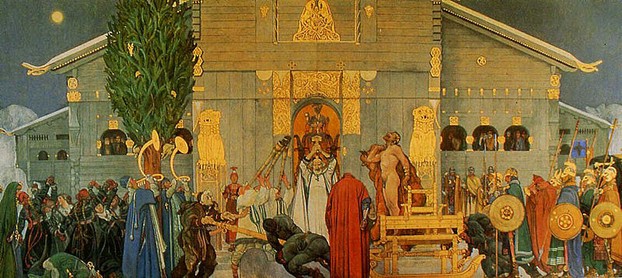Carl Larsson, the Swedish famous painter, is indubitable the most popular and loved artist in Sweden. The Realist painter and his wife Karin, was and still is one of the most well-known couples in Sweden, whose life, art and design have come to characterize the idyllic picture of Sweden that is cherished the world over.
Their legendary and charming home that the couple created together has established the widespread idea of the Swedish domestic design and lifestyle and has become one of the most famous artist-homes in the world. Carl and Karin Larsson's home are now a treasured, inspirational and well-visited home to people from not only Sweden, but all over the world.


















 Gravity Glue-Rock Sculptureson 08/26/2017
Gravity Glue-Rock Sculptureson 08/26/2017
 Fibromyalgia and Suicideon 08/01/2012
Fibromyalgia and Suicideon 08/01/2012
 Sannel's Healthy Pound Cakeon 07/17/2012
Sannel's Healthy Pound Cakeon 07/17/2012
 Lentils - The Healthy Foodon 07/09/2012
Lentils - The Healthy Foodon 07/09/2012



Please leave a comment
Matthew, Carl Larsson's paintings brings lightness, tranquility and happiness to the soul. I especially love his paintings because of that reason. They leave me with harmony and beauty in both mind and heart. I'm so happy to hear that this Swedish artist brings you this inspiration. Thank you for your time and inspiring comment. I appreciate it very much.
Sannel
His painting inspired me a lot. As a Chinese country boy who lives in the hustle and bustle of a heavily polluted city and fails to achieve my painter dream, I find serenity in his pastroral paintings.
Super husband and wife team!!! :)
Yes Rose, me too!
I love the Lucia Celebration picture!
Hello Mira! I'm so sorry for my late response to you. Yes, I agree! So simple yet so much depth and full of life. I'm glad you enjoyed the read, and I hope one day you will visit this famous home in Sweden. Thank you for your time and lovely words.
I keep looking at the composition of the St. Lucia Celebration -- quite interesting: nice and simple, emphasizing vertical planes in the foreground, middle ground, and background. It was great to read about him. Maybe I'll get to Sweden one day and see his house :-)
Hello Fibonacci! So true! I feel the same way. Thank you for your time and great comment.
Hi 2uesday! Carl Larsson used colors and lightness that gave this painter his characteristics. His paintings brings the admirer a feeling of happiness and joy. I love to look at his paintings, because they leave me walking away with pure bliss and beauty in both mind and heart. Thank you for your lovely visit and great input.
Hello brl! Yes, it sure has! The once harsh and filthy neighborhood, a breeding ground for cholera, are now an attractive section in the Capital. If they had known, lol! Thanks for your time and great comment!